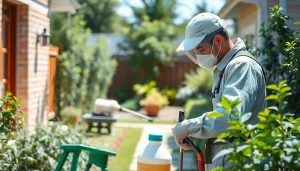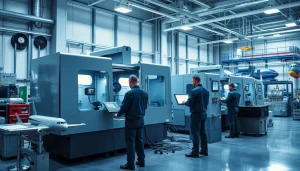Mastering Oven Repair: Tips for Efficient Kitchen Appliance Maintenance

Understanding Oven Repair Basics
Ovens are essential appliances in modern kitchens, serving a multitude of culinary purposes—from baking to broiling and roasting. However, like any appliance, they are prone to issues that can interfere with their functionality and affect your cooking. Understanding the basics of oven repair is crucial for homeowners who wish to resolve minor issues without the need to call in a technician. This guide delves into the common problems associated with ovens, the tools required for repairs, and the necessary safety precautions to observe.
Common Oven Issues and Symptoms
Identifying the symptoms of oven malfunctions can save time and money. Some of the more common issues include:
- Oven not heating: One of the most prevalent issues is when an oven fails to heat up, which could be due to a faulty heating element or thermostat.
- Oven overheating: If your oven is cooking food too quickly, it might have a malfunctioning thermostat or a miscalibrated setting.
- Uneven cooking: When one side of your dish cooks faster than the other, it could point to heat distribution problems caused by worn-out components.
- Odors or smoke: Unpleasant smells or smoke coming from the oven could indicate food residue burning or electrical issues that need immediate attention.
- Strange noises: Popping or buzzing sounds may indicate that mechanical components are beginning to fail.
Essential Tools for Oven Repair
Tackling oven repairs requires a systematic approach, combining the right knowledge with essential tools for effective troubleshooting. Key tools include:
- Multimeter: Vital for measuring electrical outputs and diagnosing electrical issues.
- Screwdriver set: Useful for removing panels and components within the oven.
- Pliers: Ideal for gripping small components or wiring.
- Tape measure: Helpful for measuring replacement parts accurately before purchase.
- Oven thermometer: A precise tool to check if your oven is heating correctly.
Safety Precautions for DIY Repairs
Safety should always come first when working with electrical appliances. Key precautions include:
- Disconnect the oven from power to prevent electrical shock.
- Allow the oven to cool down before starting any repairs.
- Use insulated tools to reduce the risk of injury or damage.
- Wear gloves to avoid cuts from sharp metal edges.
- Refer to the manufacturer’s manual for specific safety instructions related to your oven model.
Diagnosing Problems in Oven Repair
Proper diagnosis is critical to effective oven repair. By identifying the underlying issue accurately, you can ensure that the correct methods and tools are employed in the repair process.
Electrical Issues and Their Solutions
Electrical problems are among the most common in ovens and can be identified through symptoms like non-functioning elements. If you suspect an electrical issue:
- Check power supply: Ensure that the oven is plugged in and the outlet is functional.
- Test fuses and circuits: Inspect the fuse box for any blown fuses or tripped circuit breakers.
- Inspect the thermostat: Use a multimeter to check if the thermostat is functioning accurately and replacing it if necessary.
Gas Oven Troubleshooting Techniques
Gas ovens come with their own set of diagnostic challenges. If your gas oven exhibits issues:
- Check the gas supply: Ensure that the gas line is connected properly and that the valve is open.
- Inspect igniters: A faulty igniter can prevent the oven from lighting; test it by watching for a glowing tip when the oven is turned on.
- Examine burners: Dirty or clogged burners can obstruct gas flow; clean them thoroughly as necessary.
When to Call a Professional for Oven Repair
While many oven issues can be addressed independently, some situations warrant professional intervention:
- If the repairs require specialized tools or expertise.
- When dealing with gas lines or components that could pose safety risks.
- If a persistent problem remains unresolved after several troubleshooting attempts.
Best Practices for Oven Maintenance
While knowing how to repair an oven is essential, regular maintenance can prevent many issues from arising in the first place. Below are best practices for maintaining your oven.
Regular Cleaning Techniques
One of the most effective ways to prolong the life of your oven is through regular cleaning. Consider the following techniques:
- Self-cleaning feature: If your oven includes a self-cleaning option, use it following the manufacturer’s instructions to break down collected grease and grime.
- Manual cleaning: Use a mix of baking soda and vinegar for cleaning stubborn spots without harsh chemicals.
- Regular wipes: Wipe the oven’s interior and exterior regularly to keep it debris-free.
Protecting Your Oven from Damage
Preventing damage is as important as repairing it. Here’s how to protect your oven:
- Avoid slamming the door: Be gentle when closing the oven door to prevent misalignments or damage to hinges.
- Use oven-safe cookware: Always use cookware that suits your oven type to avoid melting or damaging its components.
- Keep it ventilated: Ensure proper airflow around the oven to prevent overheating and maintain optimal performance.
Scheduled Maintenance Tips
Creating a maintenance schedule can significantly extend the life of your oven:
- Monthly checks: Regularly inspect the oven’s components and clean them monthly.
- Yearly professional maintenance: Consider scheduling an annual check-up with a professional for a more thorough inspection.
- Monitor usage: Keeping track of how often you use the oven can determine when it might need maintenance or repairs.
Advanced Oven Repair Techniques
For those who are comfortable with DIY repairs and maintenance, understanding advanced techniques can facilitate more significant repairs and enhancements.
Replacing Oven Components Safely
When components wear out, replacing them can often bring the oven back to optimal performance. Key practices when replacing parts include:
- Consult the manual: Reference your oven’s manual to identify the correct replacement parts.
- Unplug the oven: Always ensure the oven is disconnected from power before beginning the replacement process.
- Follow step-by-step instructions: Many tutorials are available online; follow them carefully for a successful replacement.
Upgrading Your Oven for Better Performance
Consider upgrading certain components to enhance performance even further:
- Smart thermostats: Replace a conventional thermostat with a smart version for better temperature control.
- High-efficiency heating elements: Upgrade heating elements to improve energy efficiency and cooking performance.
- Oven racks: Consider adding adjustable or extra oven racks to increase cooking versatility.
Troubleshooting Complex Oven Mechanisms
Some ovens come equipped with advanced mechanisms that may require deeper troubleshooting:
- Understanding electronic controls: Learn how to reset and troubleshoot electronic controls, which can often go awry.
- Examining bake and broil elements: Troubleshoot bake and broil elements to ensure they are functioning correctly.
- Check the oven seal: A faulty oven seal can lead to heat loss; inspect and replace as needed.
Metrics for Successful Oven Repair
After performing repairs, gauging their success is crucial for ensuring long-term functionality and customer satisfaction. Utilize the following metrics to evaluate your repairs.
Evaluating Repair Effectiveness
To assess the effectiveness of your oven repair efforts, consider the following:
- Testing functions: After repairs, thoroughly test all oven functions to ensure they operate as intended.
- Monitoring temperature: Use an oven thermometer to verify that the oven heats to the set temperature accurately.
- Check for recurring issues: Be vigilant for any signs that the original problem may still exist; if problems recur, further investigation may be needed.
Customer Satisfaction and Follow-Up
For professional repair services, customer satisfaction is paramount:
- Feedback surveys: Utilize customer feedback forms to gather insights about the repair process and outcomes.
- Post-repair check-ins: Follow up with customers a few weeks after service to ensure everything is functioning well.
- Maintain communication: Establish an open line of communication for questions or concerns that may arise post-repair.
Continuous Improvement in Oven Repair Services
To remain competitive and effective in oven repair, continuous improvement is essential:
- Training and development: Invest in ongoing training for technicians to stay updated with the latest repair techniques and technologies.
- Service process evaluation: Regularly assess the repair process to identify areas for efficiency improvements.
- Engage with customer feedback: Use customer insights to refine services and offerings, ensuring they meet evolving needs.







